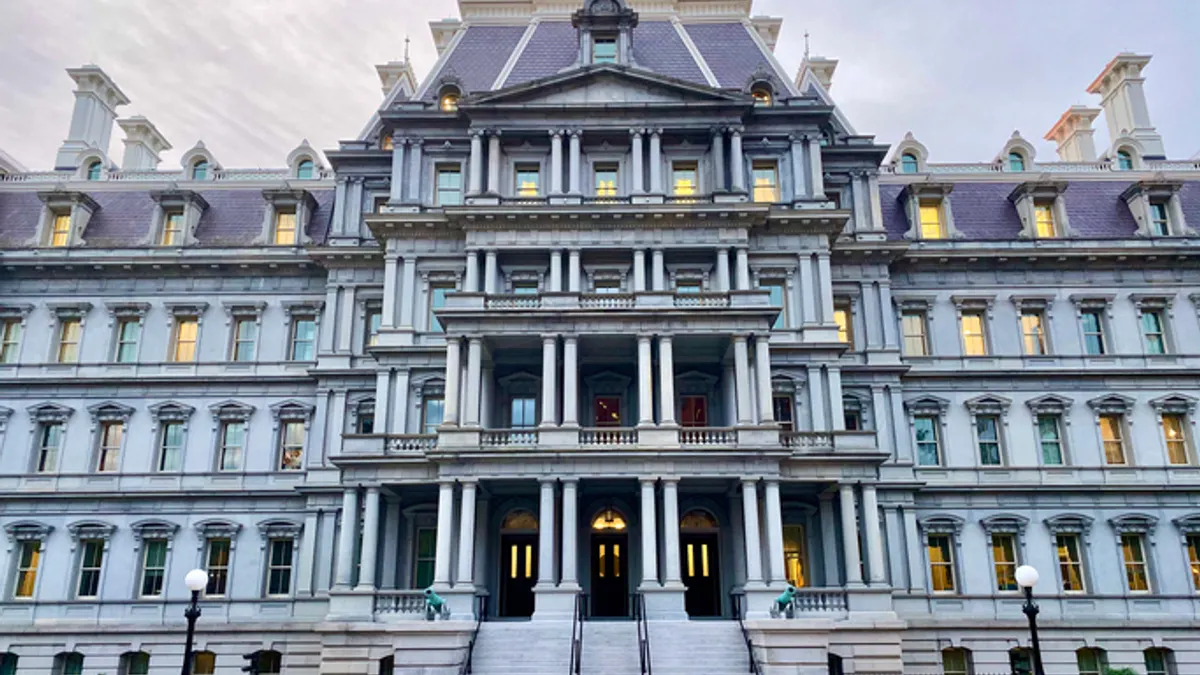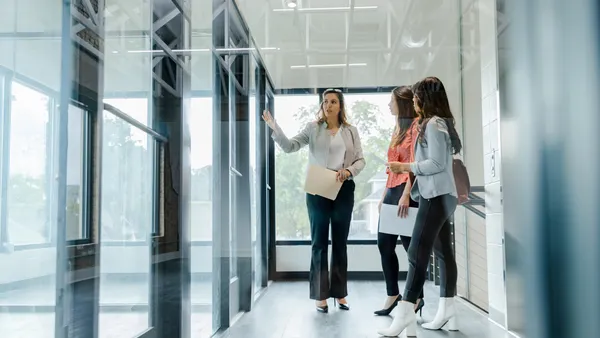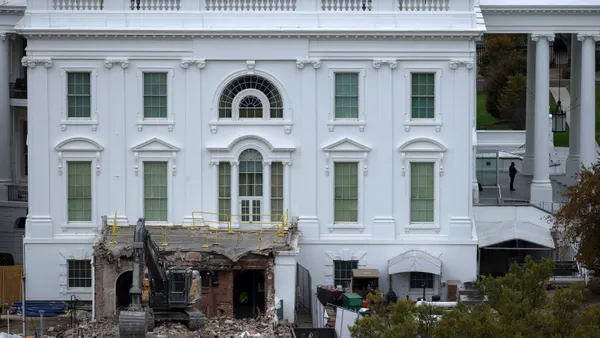In a bid to stop Donald Trump from acting before others can weigh in, a group of plaintiffs is suing the president to force him to release, and allow others to consult on, his plans to paint the Eisenhower Executive Office Building next to the White House.
There is “strong evidence that President Trump’s stated intention to paint the [building] is not hypothetical or speculative,” plaintiffs say in their complaint, filed last week in federal district court, “but imminent.”
Cultural Heritage Partners, a law firm specializing in historic preservation issues, and other plaintiffs in the case, say President Trump’s unexpected demolition of the East Wing of the White House last month, after weeks of downplaying the extent of his plans, suggest his planning for the Eisenhower Executive Office Building is well underway. If it is, that would put him in violation of federal laws that require work on a historically significant building to be undertaken only after public notice and in consultation with stakeholders, the plaintiffs say.
“President Trump initially dismissed reports regarding demolition preparations [of the East Wing of the White House] as media speculation, yet the demolition commenced within days, catching preservation officials, Members of Congress, and the public by surprise,” the lawsuit says.
Trump shared his plans to paint the building, constructed between 1871 and 1888, in the French Second Empire style, while talking with Fox program host Laura Ingraham last week.
"It was always considered an ugly building,” Trump told Ingraham. “It's actually one of the most beautiful buildings ever built."
Trump showed a rendering of the building, constructed in gray granite, as it would look painted white. "Gray is for funerals,” he said.
A permanent change
Painting the building isn’t something that can be reversed, the plaintiffs say. “Once applied, paint cannot be removed from the … stone exterior without extensive and potentially destructive treatment, resulting in loss of original material,” the lawsuit says. “Removal of paint from historic buildings is challenging and cannot always be accomplished without significant damage to underlying materials. For a building [of its] scale … removing paint from the natural granite and slate would require immense expense. Painting the building is therefore, in practice, a permanent change.”
Trump said his plans include cleaning and repointing the masonry, among other things, which the plaintiffs say also risk permanent damage to the building.
“Improper cleaning and repointing of historic masonry can [lead to] erosion or loss of historic stone surfaces, damage to mortar joints, staining or discoloration, and cracking or spalling caused by incompatible mortar mixes or excessive pressure in cleaning,” they said.
The plaintiffs say the plans — to the extent they’ve been developed and are being acted on without notice, public input and consultation — violate the National Environmental Policy Act, the National Historic Preservation Act and the Administrative Procedure Act. They argue the plans also violate Article II, Section 3, of the Constitution, known as the Take Care clause, because it requires the president to “take care” that the laws of the United States be faithfully executed.
The plaintiffs, including the D.C. Preservation League, are seeking an injunction to stop the plans from going forward until the administration provides notice, allows for public input and consults with environmental and historic preservation specialists, among others, as the law requires.
“Our complaint isn’t about the president’s taste,” Gregory Alan Werkheiser, one of the plaintiffs and a principal with Cultural Heritage Partners, told CNN this week. “You can have really bad taste. You can have really good taste. What we’re asking for is you comply with the law.”










